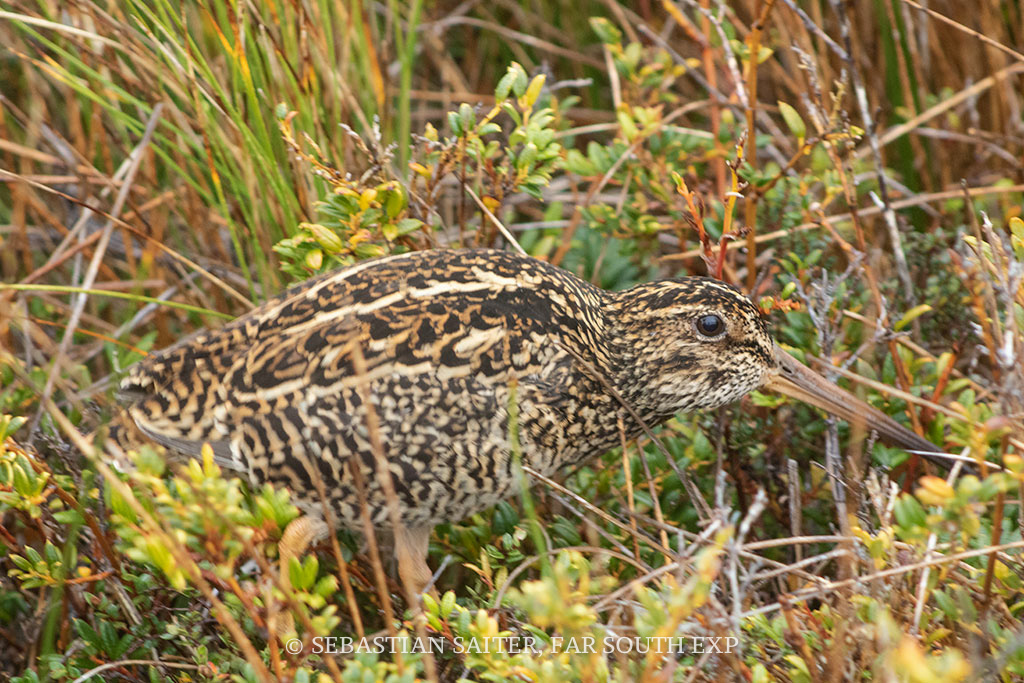
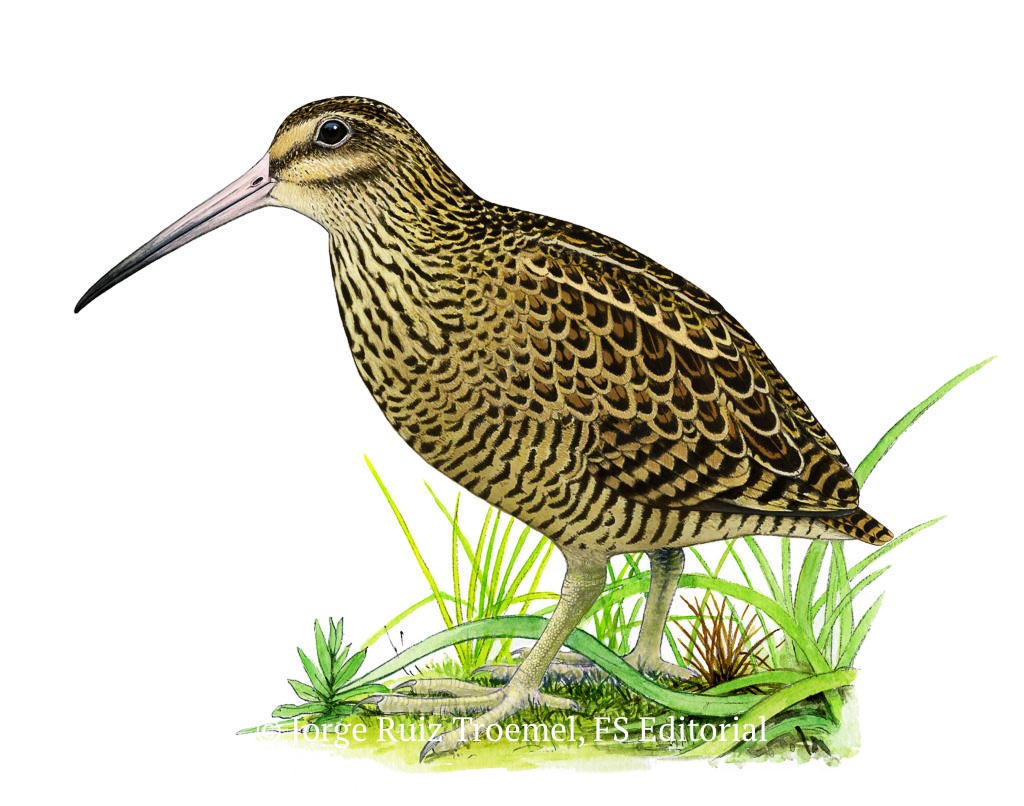
Becasina Grande | Fuegian Snipe (Gallinago stricklandii) © Illustration by Jorge Ruiz Troemel, “Aves de Chile, Sus Islas Oceánicas y Península Antártica” by Couve, Vidal y Ruiz (2016)
A Far South Expeditions team was just able to spot, watch for a while and record photos and footage of one of the hardest to see and record of all Patagonian endemics, the mysterious and elusive Fuegian Snipe, Gallinago stricklandii. Around mid-April, we came across a shy pair of birds while on a prospective trip, and although both birds quickly scurried among the tussock to try and blend with the ground, they were photographed and filmed.
The Fuegian Snipe is one of the least-known waders of Chile and the Neotropics. Largest in its genus, shows a stockier and heavier body than the migratorial South American Snipe Gallinago paraguaiae, a summer resident in southern Patagonia.
With its very long and broad-based bill used as a deep probe, Fuegian Snipe feeds on invertebrates living in the soil. It has long, thick legs, broad, round and dark wings, dark brown crown and a brown tail the same colour as the back. There´s individual variation with birds much darker or paler than average. It is believed to be most active at dusk and during the night.
An endemic to southern Patagonia as mentioned above, it is a rare, range-restricted and local, confined to seldom-visited of the maritime insular western slope of the Andes, from sea level up to 800m. It nests in the tussock and other windswept patagonian grasslands and flooded peat bogs of Sphagnum moss close to the edge of evergreen forest of Magallanes Southern Beech Nothofagus betuloides and Guaitecas Cypress Pilgerodendron uviferum. Hard to spot. If threatened, flies a short distance on fast wingbeats, following a straight course, to land nearby and further scurry among the clumps of grass until it stops and sits still, making its detection virtually impossible in the vegetation thanks to its highly criptic colours and patterns. It also sometimes perches on the roots of dwarf trees.
There are a few records in non-breeding season north of Patagonia, which leads to infere part of the austral populations migrate at least partially, leaving the area during the coldest months. Its migrations, displacements, vocal behaviour and biology in general are still pretty unknown and require for more research and study.
In Chile, it is classified as Poorly Known and Near-Threatened (NT) according to IUCN.
We celebrate this encounter that every keen birdwatcher will appreciate, and hope that it will help to spread the knowledge about this truly Patagonian speciality.
Below are some of the photos and footage captured by our trip leader Sebastián Saiter, after a long field day in the Patagonian channels.
Footage by Luis Vargas.
Anales Instituto Patagonia (Chile), 2010. 38(1):145-149
DISTRIBUCIÓN DE LA BECASINA GRANDE GALLINAGO STRICKLANDII (Gray, 1845) (SCOLOPACIDAE), EN CHILE.
Read this post in Spanish. Click here.



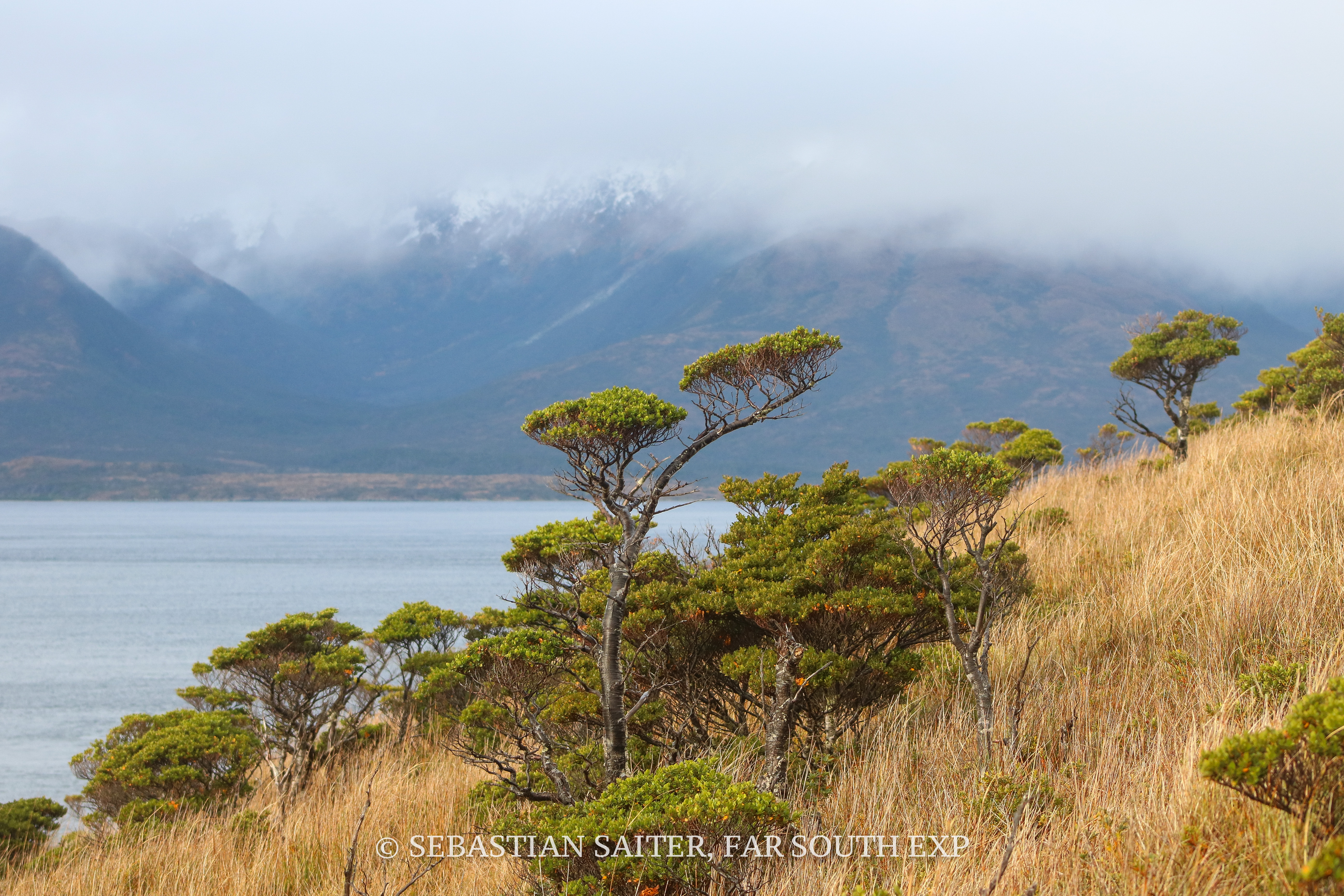
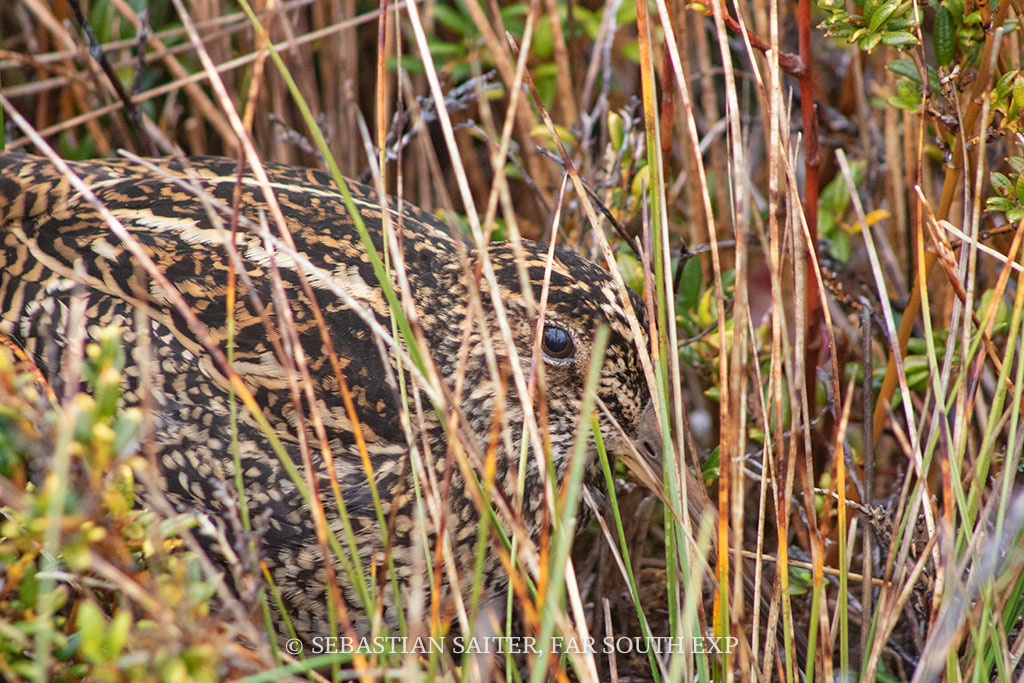
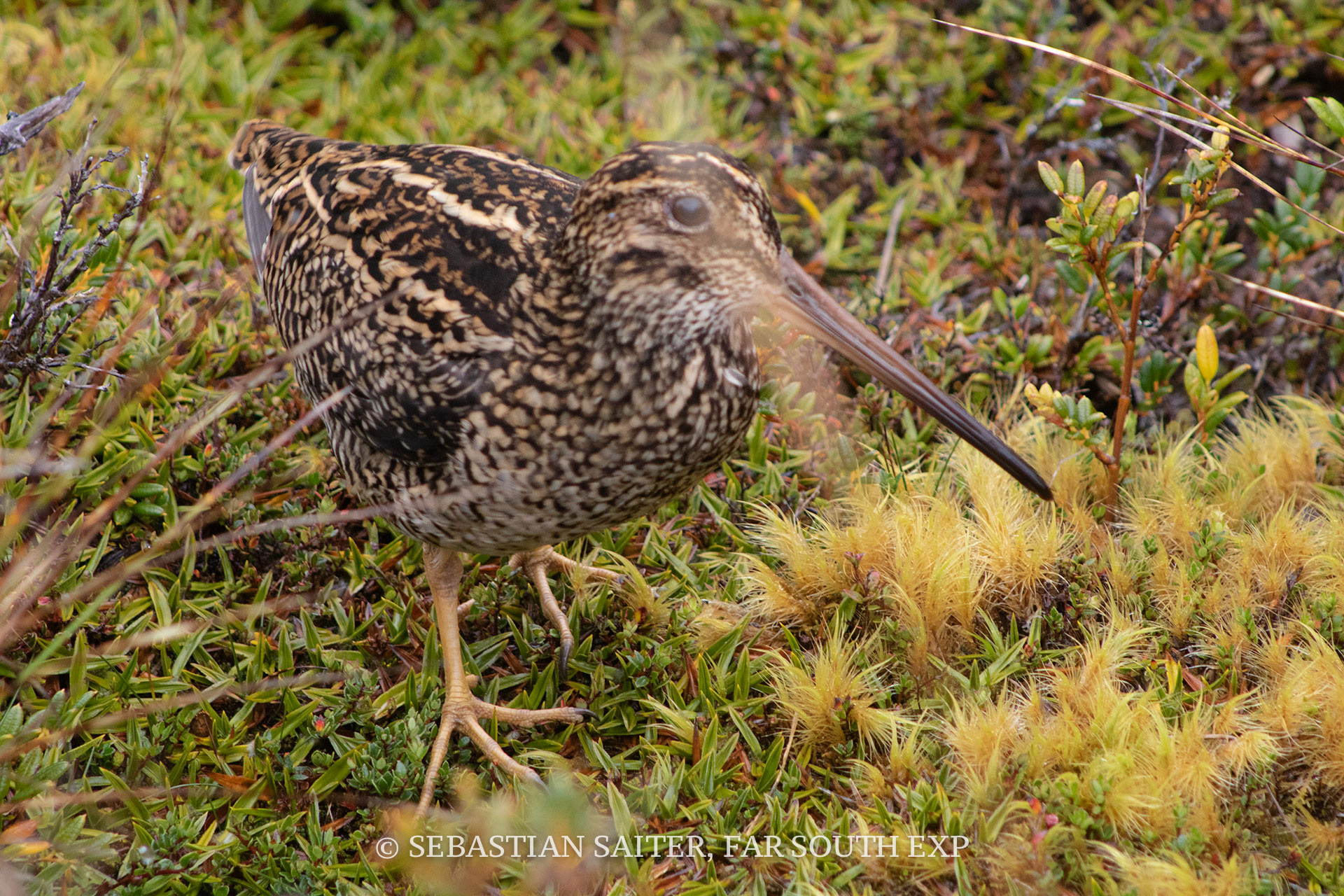
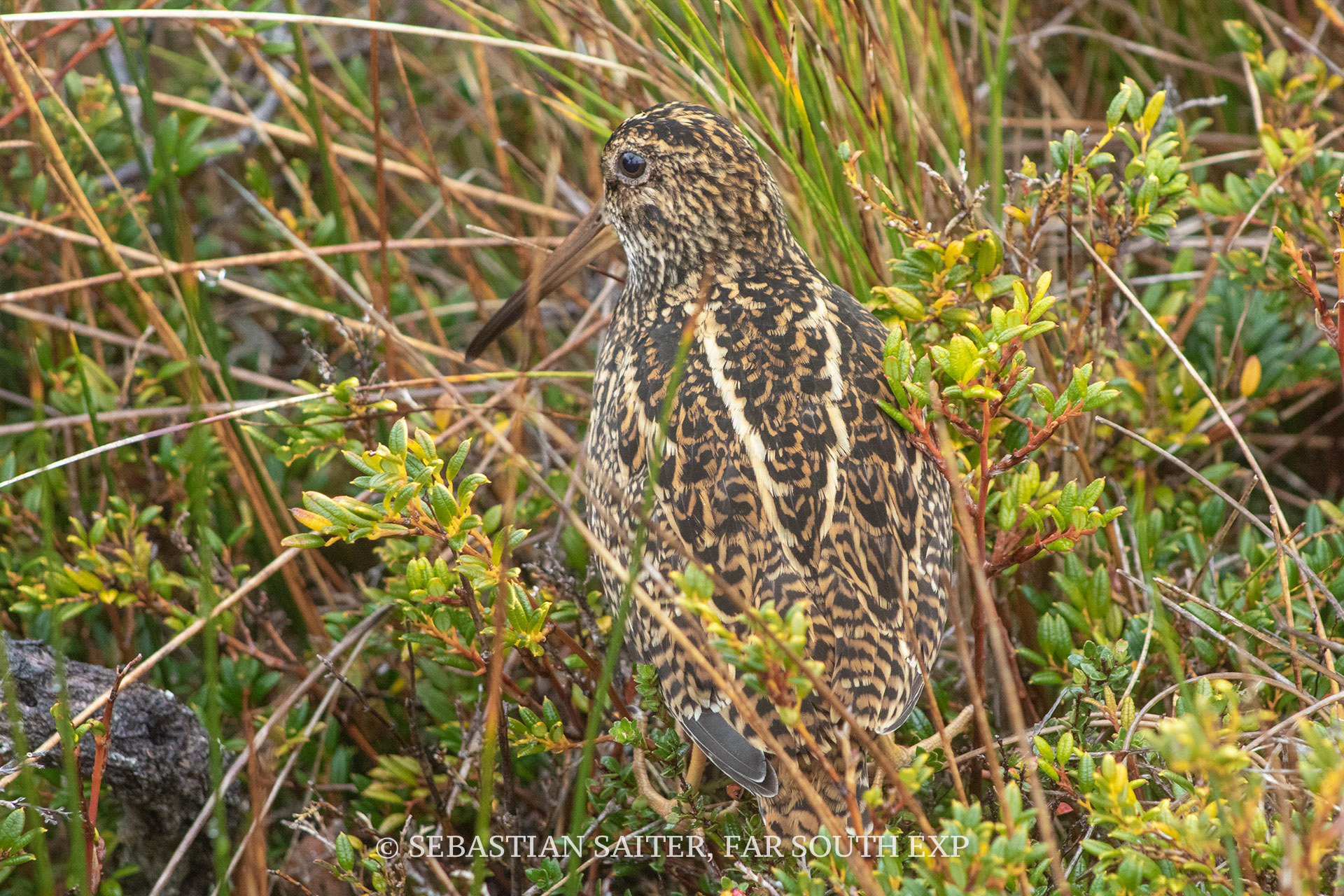
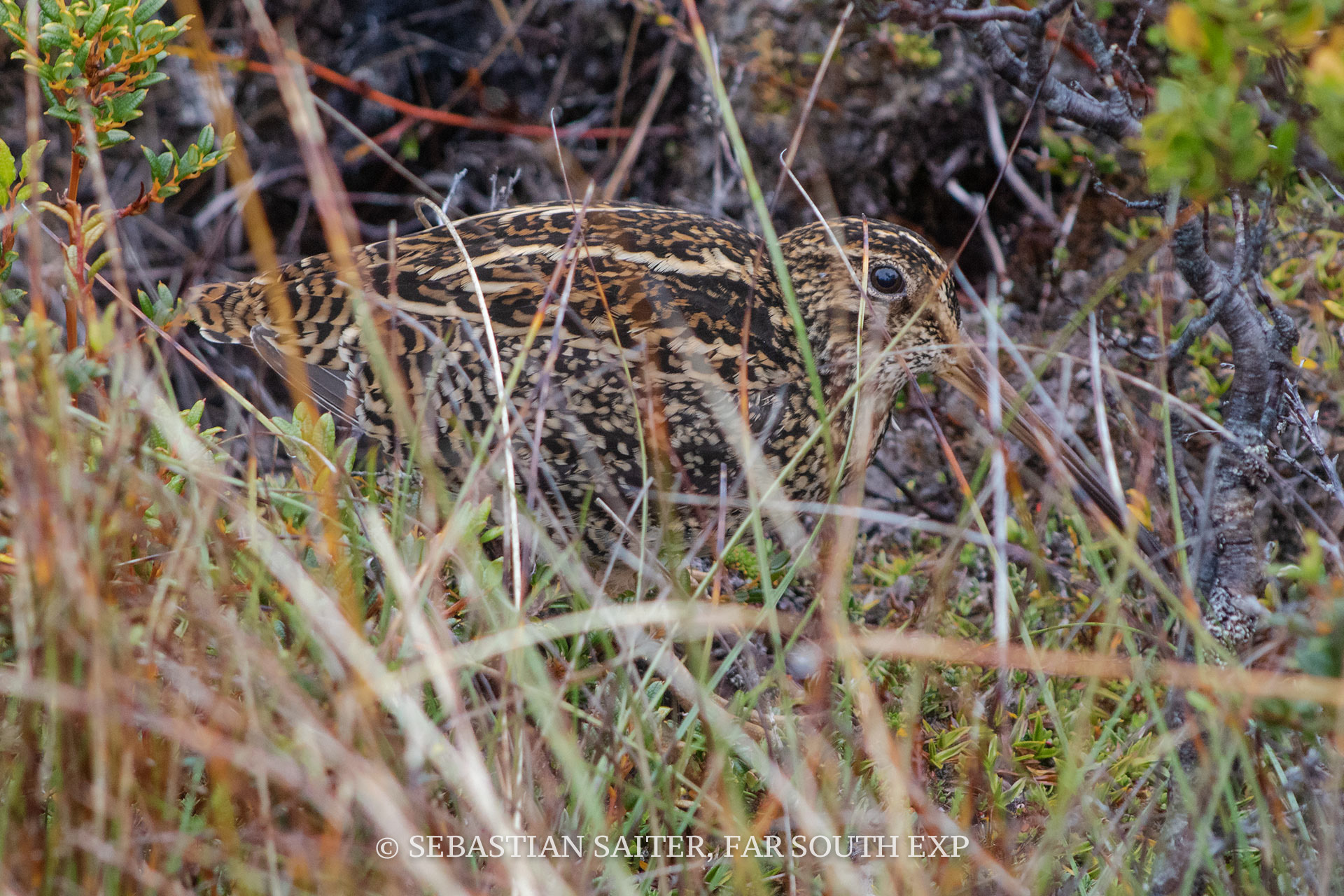
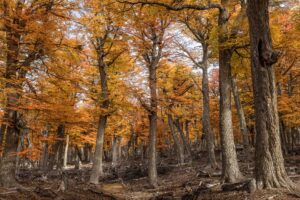






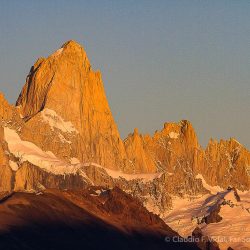

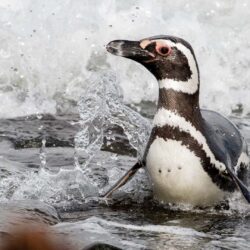

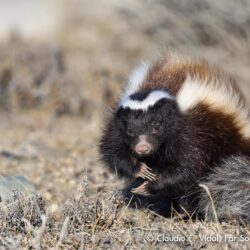
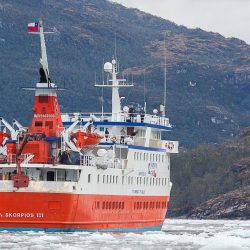
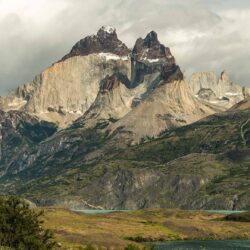


Leave a Reply
Your email is safe with us.